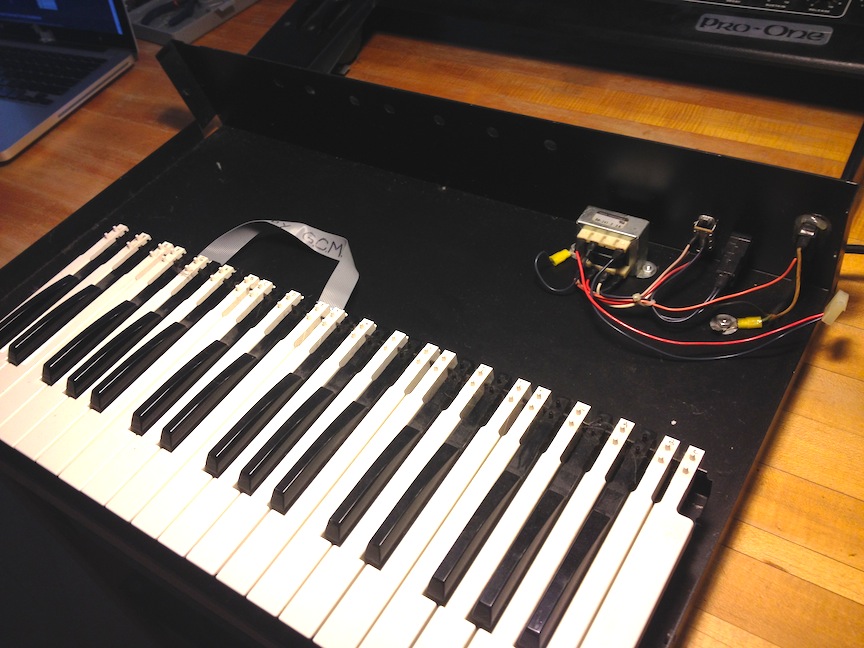::: Sequential Circuits Pro One CPU Upgrade :::
This is part one of a two part series on the Sequential Circuits Pro One. The Pro One is a classy sounding and nicely laid out mono synth from the same lineage as the SCI Prophet 5. It was released during the era of Big Expensive poly synths and their more compact Mono brethren of the late 70's and early 80's. Its sound is versatile and can cover any ground between Lead and Bass and all the way to great drums and percussion. :::
There's a limited CPU on board that can record basic, i mean BASIC, sequences and a decent Up/Up Down arpeggiator that is fun to use. I happened upon a site for MTG, Music Technologies Group, that offered a replacement CPU that adds MIDI note in out plus other controller input to this classic synth. This is the first part of the process. I plan to complete the MIDI in outs and other CPU routings later but i found that i wanted to get some extra parts first. The MTG kit includes the CPU, MIDI in out jacks, a MIDI daughter board, and some connecting wires. I felt that i wanted to have connectors to and from the jacks and MIDI board so that the Pro One would remain easy to service and modular in layout. I decided to get some RC servo extensions as they are 12" long and have 3 conductors in a nice small package with male and female receptacles. I will complete this project as soon as I have all the parts from Amazon!
:::
While i had the machine apart i found that there was a broken pot that had been carefully repaired. I re-repaired the shaft of this pot and cleaned the others to help improve the function and performance of the face plate controls. It looked like someone had used superglue the first time. I used epoxy this time so it will last longer! I also noted that this unit has the power transformer mounted to the chassis and not the board. In early versions the board mounted transformer tended to snap off and destroy the inside of the synth!
:::
Many people lament the construction of the Pro One and accuse it of being flimsy and shoddily made. I think it could be better as well, but i have seen worse too! The pots are all plastic shaft and are prone to breaking off if you abuse the instrument. Especially because they are not secured to the faceplate. I think that the faceplate is a cool design, but it is plastic and tends to flex more than it should considering it is the support for the board that is underneath it. I have considered attaching a bar of some kind under the front lip of the top plate to strengthen it for the future but i don;t have a clear idea as of yet on how to make that happen. Maybe for a future post!
:::
:::
The CPU just pops in and it's ready to go. Here's a list of features from the site: Features:
- Plug-n-Play! No soldering required!
- Supports the original functionality including the sequencer and arpeggiator.
- Each sequence can be up to 256 steps (compared to total of 40 steps on the original).
- Sequences are retained in memory even after power-down. The CPU module does not use a battery.
- Power-on settable parameters for clock start mode, arpeggio up/down end notes, arpeggio down mode and arpeggio gate time.
- Sequence Tie mode allows for a variety of note lengths.
- Sequence End mode lets you chain the two sequences.
- Optional: If you want to make your own MIDI interface, instructions are in the manual. If you want MIDI hardware included, see CPU+MIDI.
::: IF :::













